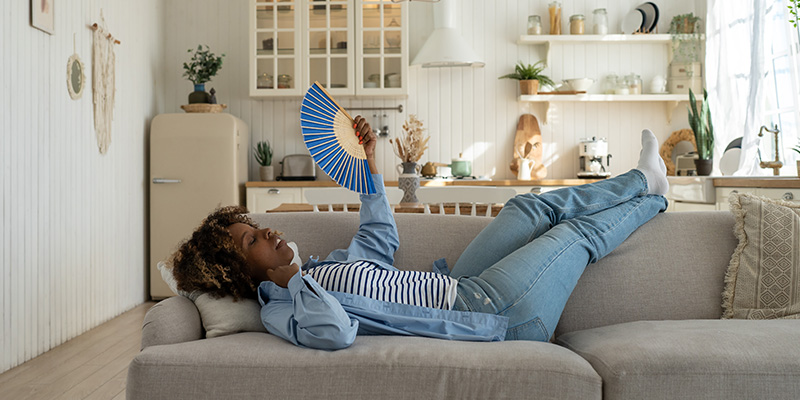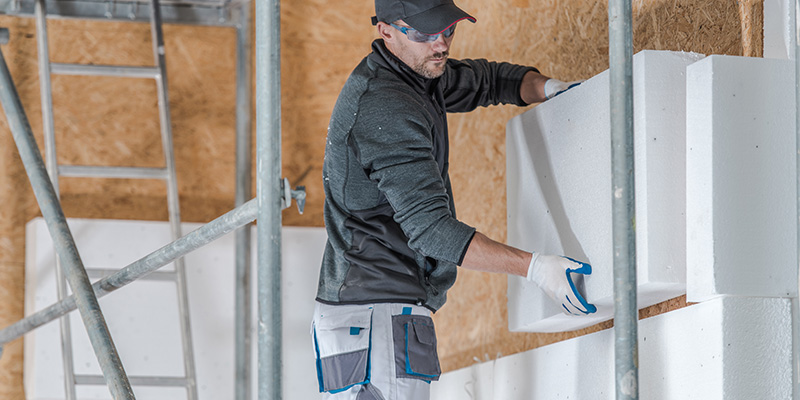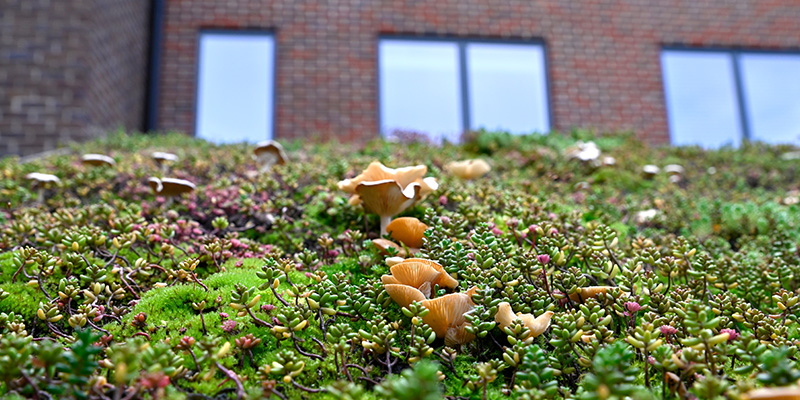Tips for Cooling Down Your Roof

Everyone knows that the UK has been getting warmer, but very rarely do the knock-on effects of this heat crop up in conversation. All of the UK’s ten warmest years on record have happened in the last two decades, with heatwaves the likes of which we saw in 2022 becoming more and more common.
Confronting this heat on a daily basis, our roofs are not only exposed but woefully unprepared to protect us from the damage this excess heat can cause. Not just to our homes but to our bodies as well.
Contents
- How Much Damage Can the Heat Really Do to Our Homes?
- How Can the Heat Affect Us?
- How to Keep Roofs Cool in the Summer Naturally?
- Are Cool Roofs Effective?
- What Thickness Insulation Do I Need?
- Can Green Roofs Keep My House Cool?
So, How Much Damage Can the Heat Really Do to Our Homes?
Tabling the staggering Environmental impact for just a second, heat brings with it a whole host of potential hazards. Starting with our roofs specifically, high temperatures increase the speed at which certain materials can deteriorate. Flat roofs covering in particular (such as felt), become far more prone to cracking and blistering.
Whilst not an immediate issue (aside from looking worn), this damage can be a real headache when the rain does eventually return. Leading to serious leaks, dampness, mould and the mother of all home repair nightmares, rot.
You may think clay tiles are more resistant to this kind of damage, but you’d be wrong. The drastic changes in climate, from rainy and humid to dry and hot, can accelerate moss growth which in turn will lift your tiles or crack them. This, in turn, makes them more likely to fall off your roof completely when next confronted with strong winds.
Even the timber under your tiles can be affected by rapid changes in temperature and UV rays, both of which can cause the wood to shrink over time. This can severely weaken the entire structural integrity of the building.

How Can the Heat Affect Us?
More so than even damp and rot, it’s important to keep in mind the harm heat can do to you and your family. Rapid temperature rises make it far more difficult for your body to regulate its own heat. The result? A whole host of illnesses, most prominently heat strokes can affect your ability to walk, and speak and, in some cases will result in seizures.
You may think your home will offer some protection, and it can, but only if the proper materials are used and maintained. Otherwise, it may well be one of the worst places for you – especially if hot air is allowed to enter without resistance.
All this brings us to the key question.
How to Keep Roofs Cool in the Summer Naturally?
The long and short of it? Insulation. If you want to avoid having to do yearly work on your roof to protect it. Insulation. If you want to stay cool inside. Insulation. If you want to limit the risk of heat induce health problems. You’ve guessed it. Insulation.
Whilst most think of these protective layers as a method of keeping heat in, in truth, they simply regulate internal temperature. Slowing down how quickly heat can escape yes, but also how quickly it can get in.
The good news when it comes to insulation is that you’ll know well before the heatwave hits if you need to upgrade (or replace yours). If you’ve noticed your home getting particularly cold in the winter months or if birds seem to crowd around your roof far more than your neighbours, it's a good idea to get your loft checked out by a professional.
They will be able to tell you whether your current insulation is up to snuff or whether you need to look into beefing it up with PIR boards, sheep’s wool or rockwool. This simple act (whilst not always the cheapest) is one of the best ways to heatproof your roof.
At the slight risk of going off on a tangent, it is exceedingly important to insulate more than just your roofs. Even simple things like blackout curtains on your windows can help shield your home from excess heat. In many cases, keeping those windows shut and the curtains drawn will actually keep the ambient temperature inside far more comfortable.

What Thickness Insulation Do I Need?
Among the big deciding factors when buying insulation (in addition to its sustainability and location) is thickness. How thick your insulation needs to be is often determined by two questions:
- How much Space do You Have?
- What U-Value Do You Want to Achieve?
The first question is a relatively simple one. If you have a converted loft, you will need insulation installed between your rafters whereas if your loft is simply used for storage, you also have plenty of room to insulate above the ceiling. Bear in mind, however, that not all thickness of insulation performs the same. PIR board, for example, is much thinner than say rockwool but can perform just as well under the right circumstances.
As for the second question, this can be a difficult one to gauge. The recommended u-values* for new builds are easy to find in approved document L with pitched roofs in England sitting at around 0.11. However, figuring out your roof is currently at and how to achieve the best U-value you can is best left to professionals.
Once you have consulted with your roofer, they should be able to advise the best materials and ideal thickness to meet all your specifications.
*Rate of heat transfer, measured in watts per meter kelvin.
Are Cool Roofs Effective?
Methods of roof heatproofing have been quickly developing, as you can imagine, to meet the ever-growing problems of heatwaves. And the biggest and brightest solution thus far has come in the form of ‘cool roofs.’
There are quite a few factors that go into making a roof cool but the most important of which is a highly reflective covering. Often to keep flat roofs cool, this will be a highly relative paint or sheet covering. However, certain cool tiles and/or shingles can be used for a similar effect.
Another important consideration is proper ventilation. Ideally, a completely sound system of tile, eave and soffit vents to allow air to circulate fully around the roof cavity. This circulation will help keep hot air moving and, in combination with your insulation, prevent it from getting trapped in your home.
Done right, studies have shown that a cool roof system can keep roof temperatures down by a full 20°C in heatwave-like environments. In the best-case scenario, a good cool roof will also eliminate the reliance on air conditioning in commercial buildings equalling big savings on electricity.
Can Green Roofs Keep My House Cool?

Yes, while cool roofs are designed to reflective heat green roofs absorb it. Converting this sunlight into water vapour through a process called evapotranspiration. Of course, creating a green roof is much easier said than done.
You’ll need an initial waterproof layer, a soil layer and then, of course, your plants. In many cases a structural engineer will need to be brought in to add some addition support to your roof so it can bear the extra weight. More accessories will need to be added included edge retention trims as well as potentially more intricate systems of water storage and drainage.
Per square meter, green roofs can cost as much as £75 - £130. If you have the time and funds to make this investment, however, you’ll earn your way into quite an exclusive club.
In Summary
It's essential that our roofs be prepared to combat the increasingly hot summer months. To do this, it's important that you ensure your insulation is up to the recommended standards and that your ventilation is sound and undamaged. When protecting flat roofs, it's a good idea to research some cooling methods including heat-reflective paint.